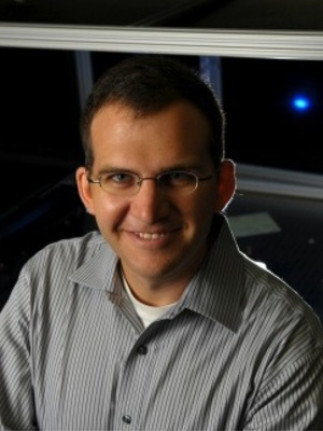The Chemistry of Coupled Nanostructures
Zac Schultz
Department of chemistry and biochemistry
Ohio State University
Abstract: The Interaction between light and noble metal nanostructures can generate intense electric fields with diverse chemical applications. A single nanostructure generally has a well-defined localized plasmon resonance spectrum, which correlates the activity of the conduction band electrons to optical frequencies. These plasmon resonances become more complex and give rise to new behavior when two or more nanostructures interact. In this presentation, we will discuss the fabrication of nanomaterials and examine two distinct behaviors arising from the interaction, or coupling, between nanostructures. In chemical sensing, coupled nanostructures have been shown to provide a sensitive label-free method of chemical analysis. Molecules that interact with these nanostructures give rise to distinctive and enhanced Raman signals, which we use for nanoscale chemical imaging and trace analyte detection. Tip enhanced Raman (TERS) and surface enhanced Raman (SERS) experiments are elucidating chemical signaling from protein receptors within cellular membranes. Coupling between plasmonic structures in a planar array have further enabled high sensitivity Raman detection in aqueous environments. We have demonstrated the ability to detect molecules in chemical separations and also at electrochemical interfaces. Distinct from isolated nanoparticles, results we have obtained illustrate the novel properties of coupled nanostructures, such as electron tunneling and enhanced chemical reactivity. These effects can drive catalysis and other chemical transformations. Our work both explains these unusual observations and examines applications for these plasmonic materials.
Bio: Zachary D. Schultz earned his B.S. in Chemistry from the Ohio State University in 2000 and Ph.D. in Chemistry from the University of Illinois at Urbana-Champaign in 2005. He performed his doctoral studies under the supervision of Prof. Andrew Gewirth using infrared-visible sum frequency generation spectroscopy to characterize electrochemical interfaces. Prof. Schultz was a National Research Council Postdoctoral Fellow at the National Institute of Standards and Technology (USA). His research at NIST was performed largely in collaboration with Ira Levin at the National Institutes of Health (USA). Following his postdoctoral training at NIST, Dr. Schultz continued as a research fellow with Dr. Levin at NIH using vibrational spectroscopy and microscopy to study biomembrane systems. Prof. Schultz began his independent career as an assistant professor of chemistry and biochemistry at the University of Notre Dame in 2009, and was promoted with tenure to associate professor in 2015. In January of 2018, Prof. Schultz moved his research program to Ohio State.
To find more about Prof. Schultz's research, you can consult his web page.
Cette conférence est présentée par le RQMP Versant Nord du Département de physique de l'Université de Montréal et de Génie physique de la Polytechnique.

